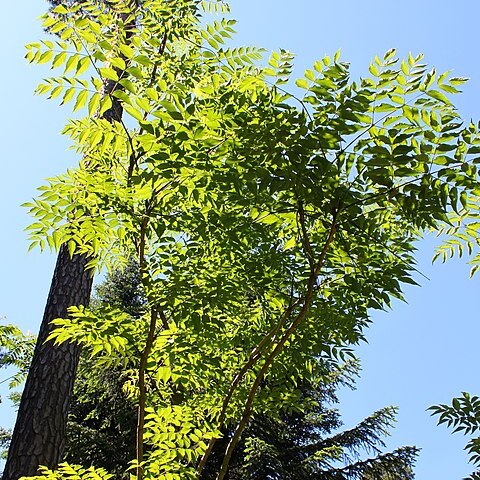Shrubs or small trees, 1.5-7 m tall, andromonoecious. Branches prickly. Leaves 2-pinnately compound, with a pair of accessory leaflets or pinnae at each division of rachis; petiole 25-40 cm, pubescent and prickly; petiolules (1-)3-7(-12) mm; leaflets 5-13 per pinna, ovate to broadly ovate, 7-16.5 × 5-11.5 cm, papery to thickly papery, abaxially pale grayish green, tomentose, adaxially dark shining green, densely pubescent, secondary veins 9-11 pairs, base subcordate to rounded and often slightly oblique, margin serrate, apex acuminate to acute. Inflorescence a terminal panicle of umbels; primary axis ca. 20 cm; secondary axes 35-80 cm; ultimate axes with a terminal umbel of bisexual flowers and several lateral umbels of male flowers; bracts and bracteoles persistent, lanceolate, narrowly triangular or linear, sometimes leaflike, to 2.5 cm; umbels 20-50-flowered; pedicels 8-21 mm, densely pubescent. Ovary 5-carpellate; styles 5, united basally, free apically. Fruit globose to ovoid-globose, 3-4.5 mm in diam.; styles persistent, recurved. Fl. Sep-Dec, fr. Nov-Jan.
More
A tall shrub or small tree. It grows 9 m tall. It spreads about 9 m wide. It develops suckers freely. The leaves are up to 1 m long and are twice divided into leaflets along the stalk. The leaves are 0.6 m wide. The flowers are off-white. They are small but occur in large panicles. Some consider it a deciduous form of Aralia elata.


